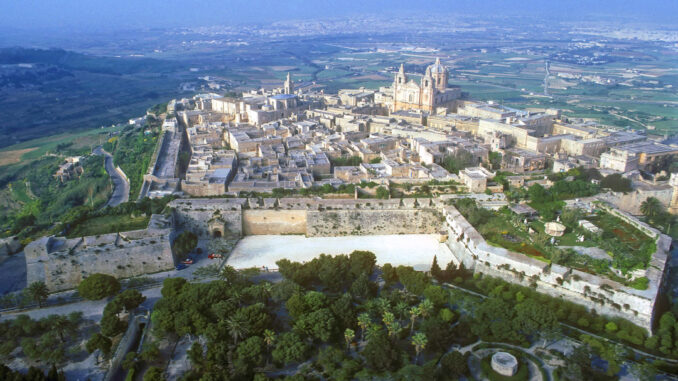
Bigger isn’t always better when it comes to European cities
Europe’s capital cities undoubtedly offer incredible attractions, restaurants and entertainment.
But don’t rule out smaller cities, which offer equally memorable cafés, architecture, history and culture. As a bonus, they are less crowded, easier to get around and usually less expensive.
Examples? Here are five lesser-known European cities with a wealth of cultural, culinary and fun experiences.
Graz, Austria
Located 150 kilometres southwest of Vienna, Graz hugs both sides of the Mur River. Its picturesque architecture is a reminder that Graz is 900 years old.
The well-preserved historic centre of this city of 340,000 people is a UNESCO World Heritage Site. The best way to see many of its 1,000 buildings is on foot.
Cafés, beisls – the Austrian equivalent of French bistros – and jazz clubs mingle with patrician buildings adorned with paintings, flowers and artistic scrolls. The double-headed golden eagle crest of the Habsburg dynasty still hangs over the carved wooden façade of a bakery.
The splendid 16th-century Renaissance Landhaus is now home to the Styrian provincial parliament. Three tiers of arcades and flower-bedecked balconies surround the courtyard.
Although the Landhaus is beautiful, nothing in Graz surpasses the Styrian Armoury. The five-storey building houses the oldest and largest historical collection of arms in the world – more than 32,000 pieces, dating from the 15th century.
Guided tours of the arsenal take you back to the days of Sir Lancelot and King Arthur. Phalanxes of shining armour march across the wooden floors. Racks of flintlock rifles and menacing halberds line the walls.
At one end of the first floor, several cannons stand ready to load with long-handled ramrods. Pumpkin-sized iron balls rest at their sides, with umbilical chains so that they can be dragged back up to the launch site and reused.
The inventory includes sharp bayonets and pistols with handles of inlaid calf bone. One bayonet, attached to a firearm muzzle, converts to a hammer and a screwdriver. It’s a medieval version of a Swiss army knife.
Some suits of armour have V-shaped breastplates, designed to deflect blows from swords. Others are fluted to mimic pleats in civilian clothing, or intricately engraved to attract attention during parades, tournaments and jousting matches.
Shelves display spare parts – metallic elbows, articulated gauntlets and lobster-tailed helmets. Much of the equipment bears the scars of battle. Everything is stored exactly the way it was when the arsenal was in use.
The armoury is an undeniable highlight of the beautifully preserved medieval city of Graz.
Mdina, Malta
Another frozen-in-time medieval city is fortress-like Mdina, located 11 kilometres southwest of Valletta – Malta’s capital. Perched on top of a plateau, the city has been called different names since it was founded 4,000 years ago.
During the Bronze Age, it was a fortified settlement. About 1000 BC, the Phoenicians built a wall around the city and named it Malet, which means “protected place.”
Mdina received its current name from the Saracens, who took over the island in AD 870. For defence, they built a deep moat to separate Mdina, “the city surrounded by walls,” from Rabat, “the suburb.”
Since then, Mdina has scarcely changed. Both its structure and street plan remain as they were more than 1,000 years ago.
That’s despite the intervention of different rulers. The Normans brought Christianity, the Knights of St. John caused a mass exodus of citizens to their new city of Valletta and the British made Valletta the centre of activity, leaving Mdina as a refuge for Maltese noblemen.
Mdina is now called the “Silent City” because only residents’ cars and emergency vehicles can pass through the entrance gates. Echoes from the past greet you at every nook and corner.
Countless details cry out for attention as you journey back in time along its narrow, canyon-like streets. Many of the ornate palaces lining the streets are now private homes, maintained by families who inherited them from their noble ancestors.
Life-sized statues of Madonnas and saints gaze down from niches carved into building corners. Antique lion, dolphin and gargoyle door knockers punctuate heavy red, green and brown wooden doors.
The scent of a wood fire and the fragrant aroma of freshly baked bread are cues to stop at a café or restaurant to enjoy traditional Maltese food and drink.
Enjoy the crusty bread with ġbejniet – small, round cheeses, rolled in crushed black peppercorns and marinated in olive oil and vinegar – and a glass of local red wine. Or, snack on pastizzi (savory Maltese cheesecakes), qassatat (round pastries stuffed with mashed peas) and Kinnie, a bittersweet orange soft drink.
If the café that you patronize is on Piazza Mesquita, the beautiful square may look familiar. It and the Mdina Gate were two of the film locations for the fictional capital city of King’s Landing in Game of Thrones.
Almería, Spain
Several locations in Almería also appeared in Game of Thrones, including the Alcazaba Fortress, which acted as the capital of Dorne.
The city’s desert-like landscapes and the Alcazaba have made Almería a popular film location for dozens of movies and TV serials, including Lawrence of Arabia, Cleopatra, A Fistful of Dollars, Never Say Never Again with Sean Connery as James Bond, Indiana Jones and the Last Crusade and How I Won the War starring John Lennon.
Located on the Andalusian coast, 400 kilometres southeast of Seville, Almería is known for its warm winters and 320 sunny days each year.
Dominating Almería from a hill and covering more than nine acres, the Alcazaba is one of the largest fortresses in Europe. A long series of steps climbs to the 13th-century entrance of the Moorish citadel.
From its crenellated parapet walls, you can enjoy panoramic views of the flat-roofed buildings of Almería (population 200,000). Towers, walls and gates punctuate the three restored Muslim- and Christian-era enclosures.
Purple-flowering jacaranda trees, agaves, prickly pear cacti, date palms, pomegranate and carob trees grow inside the fortress. In the early 17th century, the Spanish no longer needed a military fort, so they created gardens inside the Alcazaba.
In the city below, don’t be surprised if you encounter one of Almería’s numerous festivals. They provide delightful glimpses of Andalusian culture.
Religious festivals feature processions with flower-covered silver shrines on carts, drawn by oxen decorated with red velvet headpieces. Many women and girls wear flamenco dresses and carry castanets and fans, while men and boys don bolero hats.
With its buttressed towers, Almería’s 16th-century Gothic and Renaissance cathedral resembles a fortress more than a church. Look for the bas-relief of angels feasting. The decoration advised early Christians that they would celebrate in paradise if they lived good lives.
If the image makes you hungry, walk to the air-conditioned Central Market. Clean, well-stocked counters display Iberian hams, sausages, fresh fish, cheese, wine and colourful fruits and vegetables.
Market café cooks will prepare the food that you buy to eat at tables in the market. Try the fresh red shrimp sautéed in garlic butter.
Heraklion, Crete
Heraklion, on the island of Crete – a 50-minute flight south of Athens – also has a city-centre market.
The pedestrian market is a lively place with several outdoor cafés and shops selling traditional Cretan food and drink, including local cheeses, spicy green olives, thyme honey, olive oil, baklava and herbal mountain teas.
Wear off the calories on a two-hour to half-day walking tour. The old Venetian port is a short walk from the market. The 16th-century Koules Fortress is at the northern end of the old port’s jetty, where fishing boats dock.
A blue-and-white Greek flag flies above the fortress. The stone building withstood a Turkish siege for 22 years, the longest in European history. It ended when the Turks gave gold to the Venetians to surrender, thereby preserving the Venetian fort and walls.
Reliefs of the Lion of St. Mark decorate the exterior. The 26 rooms inside are restored. Lower-level rooms now house art galleries.
The fascinating Heraklion Archaeological Museum is a short walk east of the market. To truly appreciate its collections, before your visit, take a 19-minute taxi ride south of Heraklion to the archaeological site of Knossos, which housed the Minoans – the first-known sophisticated civilization in Europe.
Knossos was a town that developed around the palace of King Minos. The complex included homes for royalty, officials, priests and ordinary people, as well as treasuries, workshops, shrines and storerooms. Some of the rooms contain decorated pottery jars that once held wine, olive oil, grain and honey.
As you view remnants of buildings with stairways, wall paintings, running water and under-floor heating, it’s hard to believe that the Palace of Knossos was first built about 4,000 years ago. (The Athens Acropolis was built 1,000 years after the end of the Minoan civilization.)
The Minoans were ancient people, but they were an advanced civilization. Even with today’s modern tools, jewellers are unable to duplicate the fine spherical decorations on a 1700 BC gold honeybee pendant.
In the central court, guides explain that Knossos residents came here for sports, including watching athletes somersault over the backs of charging bulls, as depicted in the legendary bull-leaping fresco.
A small stone throne in the Throne Room was used 3,500 years ago. The queen’s apartment displays a copy of the famous dolphin fresco.
You can admire the original dolphin fresco in Heraklion’s Archaeological Museum. Minoan artifacts in the museum’s 27 galleries include decorated clay sarcophagi, modern-looking gold necklaces and beautiful Kamares pottery.
A highlight is the Phaistos Disc, a 16-centimetre-diameter round clay tablet inscribed with hieroglyph-like symbols. The Minoans used two still-undeciphered ideogram scripts – one for religion and one for common people.
Marvelling at the museum’s Minoan treasures is a rewarding way to conclude your walking tour of Heraklion.
Maastricht, the Netherlands
Walking is also the best way to explore the 2,000-year-old Roman city of Maastricht, three hours southeast of Amsterdam. (The city of 277,700 people is just one hour from Brussels, Belgium’s cosmopolitan capital.)
Following cobblestone streets through medieval city gates, you encounter numerous fortifications, ranging from 13th– and 14th-century walls and towers to well-preserved bastions. They surround historic streets, lined with budget-conscious shops and upscale designer boutiques.
Stop for a quick snack at a waffle stand or rest your feet during lunch at one of the city’s diverse restaurants. Café Sjiek – Maastricht’s first licensed diner (since 1982) – for example, serves delicious regional cuisine, ranging from local pâtés and cheeses to asparagus croquettes and sauerbraten.
In addition to reasonably priced European wines, the restaurant serves Apostelhoeve wine, made from grapes grown in vineyards south of the city. The most atmospheric place to sample these wines is in the Marl Caves of Château Neercanne, four kilometres south of Maastricht.
The château’s wine cellar is part of a network of ancient passageways running through the Marl Caves. Chiselled out of limestone left after mining blocks to build fortifications, the cellar offers ideal wine storage conditions. Visitors can sample wines and view historic carved signatures and inscriptions on the walls.
Just eight kilometres northeast of Maastricht, Château St. Gerlach is surrounded by Baroque gardens and a nature reserve. The estate’s historic buildings – including the red brick farmhouse (dating from 1759), the convent and grain lofts – have been magnificently converted into 114 guest rooms, two restaurants and a spa.
It’s a memorable place to stay when you visit Maastricht.
We hope that these examples motivate you to add some less-popular small cities to your next European travel agenda.
You’ll be happy that you did.
Story and photos © Barb & Ron Kroll
Barb & Ron Kroll publish the trip-planning website www.KrollTravel.com
